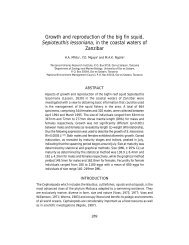gpa_east_africa_case.. - GRID Africa GeoPortal - UNEP
gpa_east_africa_case.. - GRID Africa GeoPortal - UNEP
gpa_east_africa_case.. - GRID Africa GeoPortal - UNEP
Create successful ePaper yourself
Turn your PDF publications into a flip-book with our unique Google optimized e-Paper software.
Potable waterWith continued improvement in piped water supply coverage, there has been a noticeablereduction in the use of streams and rivers as water sources for drinking. However,contamination of water sources continues. Potable water sources or the Beau Vallon areacome from the Rhodas and Le Niol rivers. The surface water at the inlet of both Rodhas andLa Niol Rivers have been found to be polluted from non-point sources such as householdseptic tanks. The sources of such pollution are undoubtedly associated with humansettlements further upstream. The water quality immediately downstream from the Le NiolWater Treatment works which treats water from these two rivers, is virtually the same.However, as the river passes human settlements and farms on its way to the sea the pollutionload increases (Shah, 1997). The figure below illustrates the water quality of these rivers.Table 8: Water Quality of surface river water at Le Niol Treatment Works inletAnalysis Rodhas River Le Niol RiverPhysicalAppearance Clear ClearColour (Hazen) 0-15 5-100Turbidity (NTU) 0.5-5 0.5-5Conductivity (µs/cm 20-100 20-100Total Solids (mg/L) 30-150 50-300BacteriologicalTotal Coliforms (CFU/100ml at 35°C) 10-200 10-200E.coli (CFU/100ml@44.5°C) 10-200 10-100Faecal streptococci (CFU/100ml@35°C) 5-30 5-20Source: PUC, 1998A Project funded by the European Union in 1997 has resulted in rehabilitation of the existingLe Niol Water Treatment Works. This has resulted in significant reduction in post-filteredwater by reduction of the high turbidity raw water. A great health benefit is therefore nowavailable to all the residents in the entire Beau Vallon area. Throughout the year cleardrinkable water is now available to all those residents and the hotels and guesthouses inthese districts. This clear water also avoids the need for these residents to boil waterparticularly during the rainy season. Prior to the refurbishment works, during the rainy seasonthe piped water was noticeably red in colour owing to this high turbidity and the inadequacy ofthe plant to remove it. The occurrence of water borne diseases may have been higher inthese conditions (Shah, 1997).Fisheries issuesContamination of shellfish and fish owing to sewerage is still not an issue and there has beenno known <strong>case</strong> of shellfish poisoning due to sewage-related contamination. Nevertheless, thethreat looms on the horizon, especially if efforts are not made to reverse current trends incoastal pollution.2.3.2 COST-BENEFIT ANALYSISBeau Vallon (Seychelles) Summary DataArea• Seychelles: 455 sq. km• Greater Beau Vallon: 1,100 haPopulation• Seychelles: 78,000• Greater Beau Vallon: 7,000 (9% of total Seychelles population)• Population projections: 7,600 for 2002 for 9,000 for 2010• Estimated population growth: 2% average per annum• Number of households: 1,555 (average household size 4.5 persons)• Estimated number of housing units: 1,555• Population density: 10-15 dwellings per ha (45-67 persons per ha)Final Draft Report – Cost Benefit Case StudiesGPA Strategic Action Plan on Sewage, October, 200047


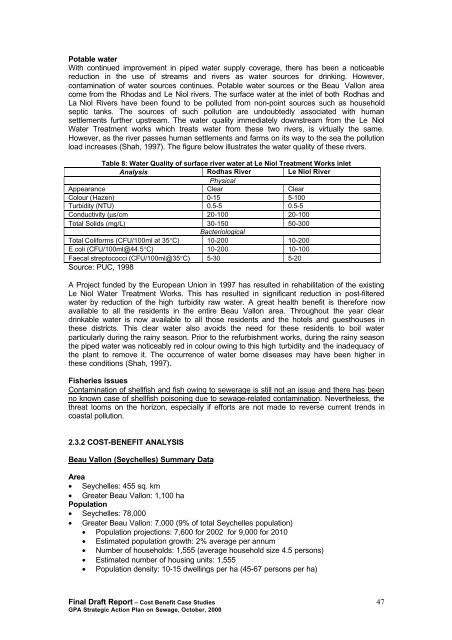
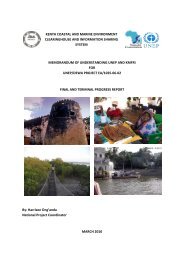
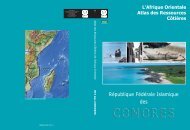
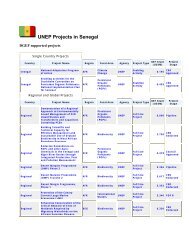

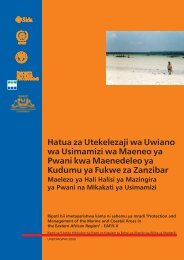
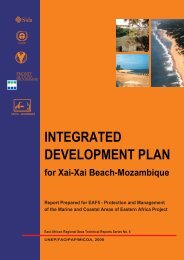
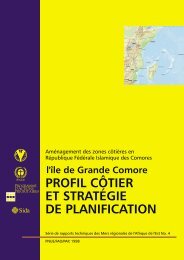
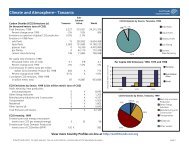

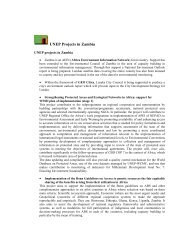
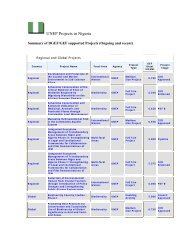
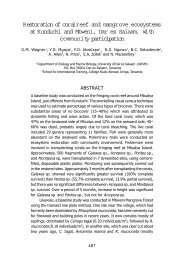
![Please Click to download [English] - GRID Africa GeoPortal - UNEP](https://img.yumpu.com/30633391/1/184x260/please-click-to-download-english-grid-africa-geoportal-unep.jpg?quality=85)
